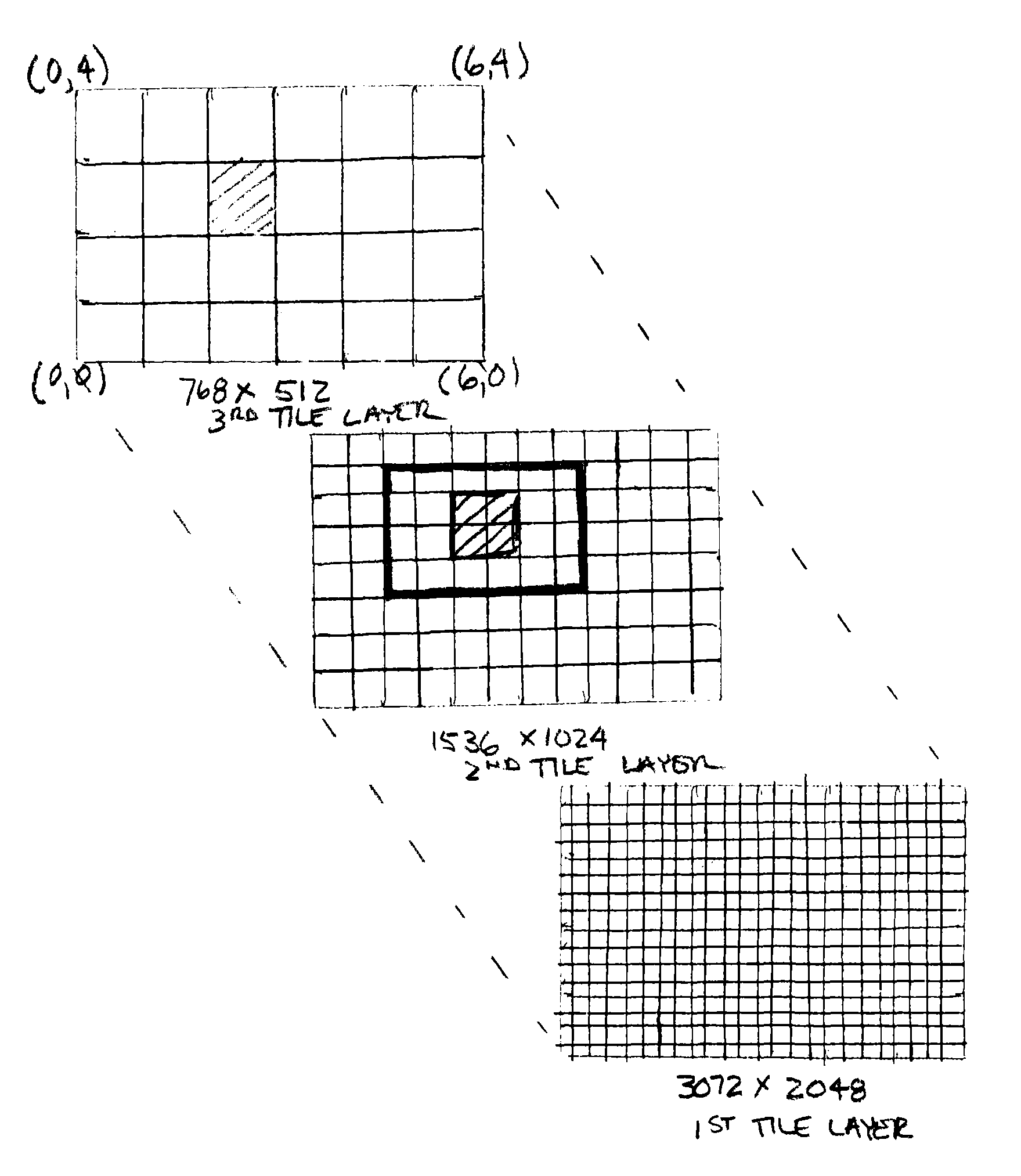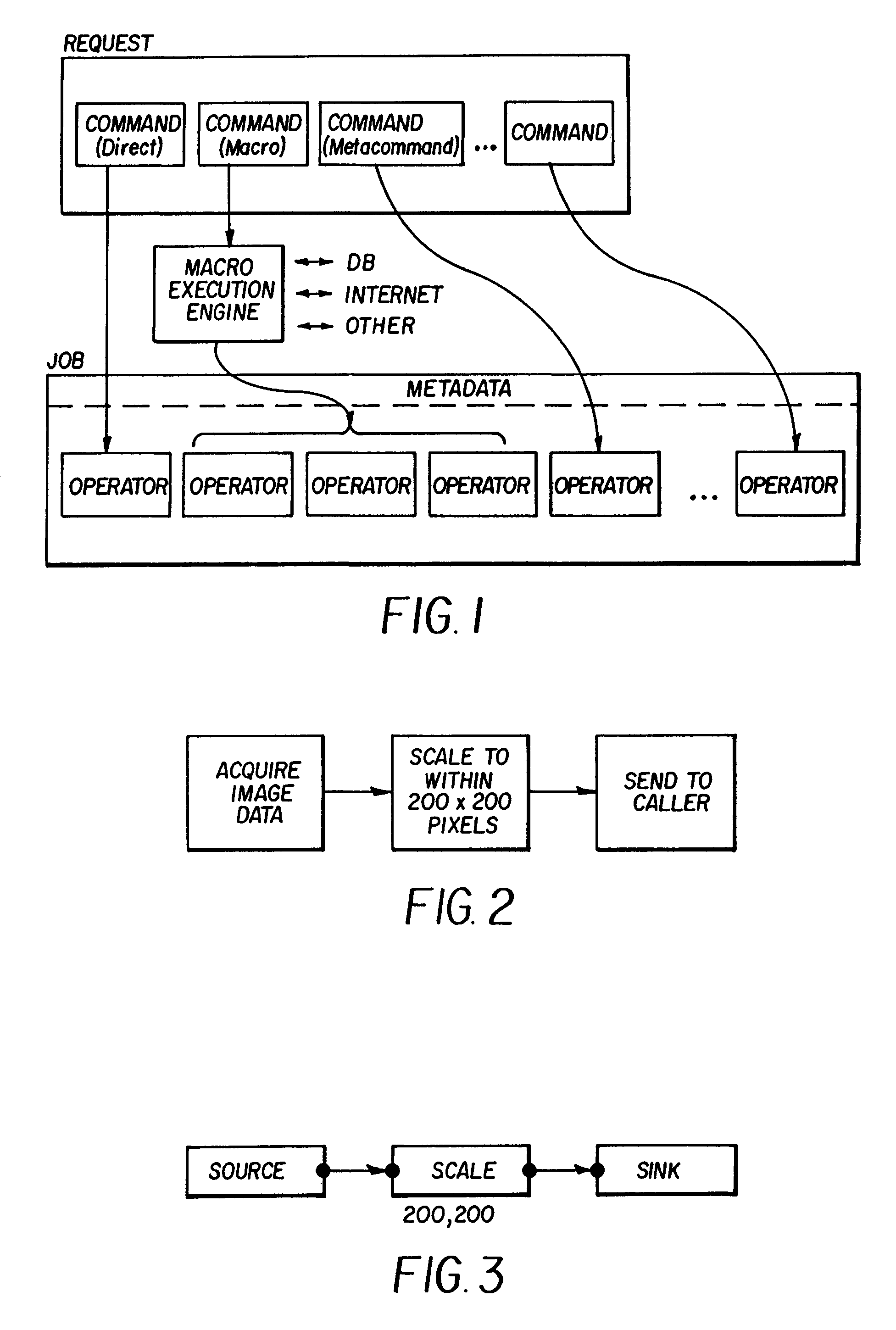Enhanced zoom and pan for viewing digital images
a technology of zoom and pan, applied in the direction of instruments, static indicating devices, advertising, etc., can solve the problems of limited computer processing speed, limited data transfer rate associated with available communication networks, and high cost of electronic imaging equipment and electronic memory devices, so as to reduce the area and increase the area
- Summary
- Abstract
- Description
- Claims
- Application Information
AI Technical Summary
Benefits of technology
Problems solved by technology
Method used
Image
Examples
Embodiment Construction
[0039]The present invention is directed to a system and method that generates and transmits digital image over a communication network to an end user. The system and method includes a zoom and pan (ZAP) feature that offers a user the ability to see all available detail of a displayed image despite the limited image display area. Specifically, images presented within a zoom and pan interface allow the user to zoom in to a particular area of a displayed image to see additional detail, pan to view various areas of the displayed image, and to zoom out again to view the whole displayed image in context. Dynamic imaging features, such as hotspots, can be incorporated with the ZAP feature, the selection of which causes a further action to occur, and viewing-region-tracking which tracks and reports the locations within an image that are viewed by the user.
[0040]The preferred embodiments of the invention will be described with reference to a dynamic imaging server of the type described in U....
PUM
 Login to View More
Login to View More Abstract
Description
Claims
Application Information
 Login to View More
Login to View More - R&D
- Intellectual Property
- Life Sciences
- Materials
- Tech Scout
- Unparalleled Data Quality
- Higher Quality Content
- 60% Fewer Hallucinations
Browse by: Latest US Patents, China's latest patents, Technical Efficacy Thesaurus, Application Domain, Technology Topic, Popular Technical Reports.
© 2025 PatSnap. All rights reserved.Legal|Privacy policy|Modern Slavery Act Transparency Statement|Sitemap|About US| Contact US: help@patsnap.com



